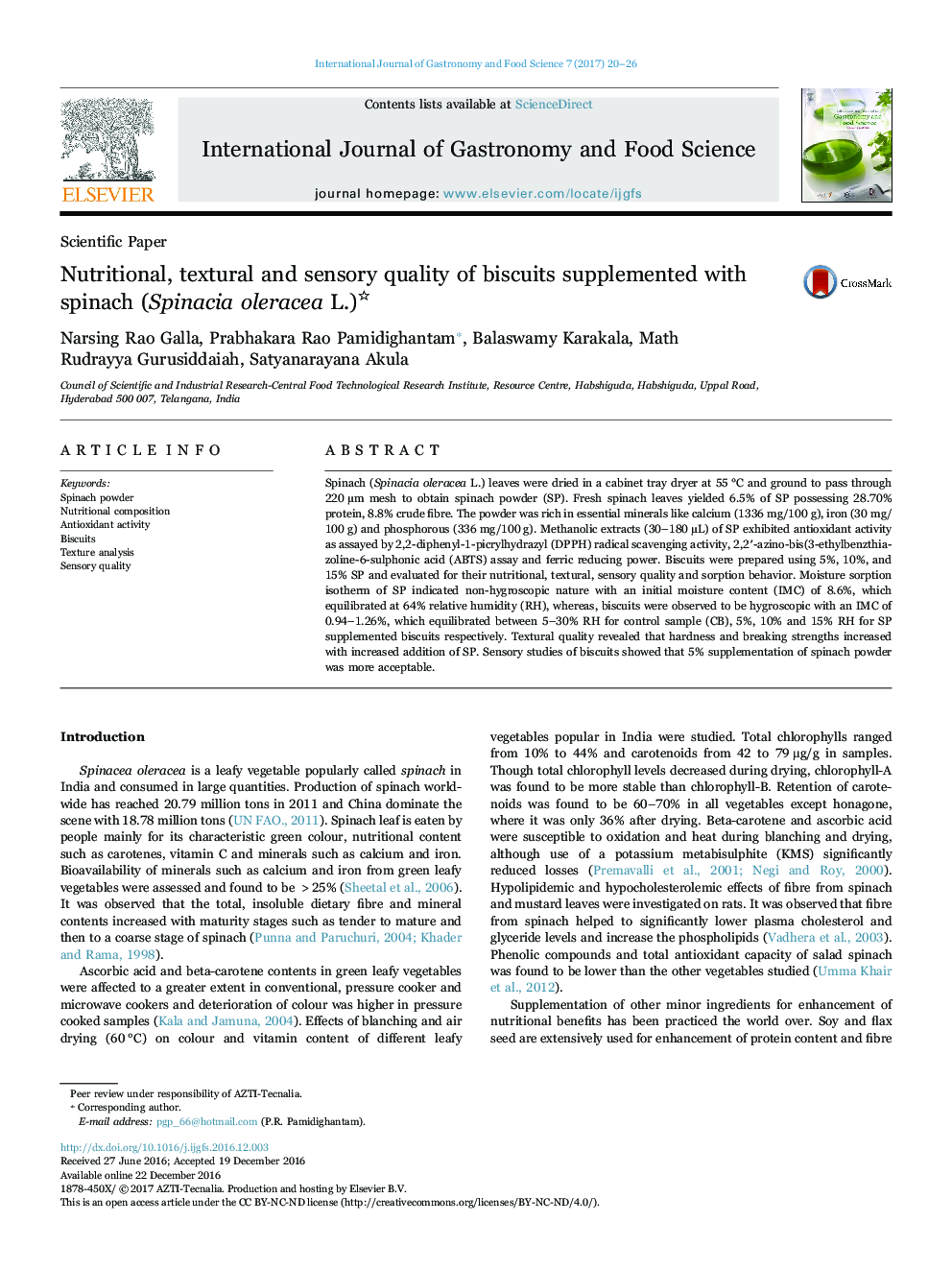| Article ID | Journal | Published Year | Pages | File Type |
|---|---|---|---|---|
| 7535086 | International Journal of Gastronomy and Food Science | 2017 | 7 Pages |
Abstract
Spinach (Spinacia oleracea L.) leaves were dried in a cabinet tray dryer at 55 °C and ground to pass through 220 µm mesh to obtain spinach powder (SP). Fresh spinach leaves yielded 6.5% of SP possessing 28.70% protein, 8.8% crude fibre. The powder was rich in essential minerals like calcium (1336 mg/100 g), iron (30 mg/100 g) and phosphorous (336 mg/100 g). Methanolic extracts (30-180 µL) of SP exhibited antioxidant activity as assayed by 2,2-diphenyl-1-picrylhydrazyl (DPPH) radical scavenging activity, 2,2â²-azino-bis(3-ethylbenzthiazoline-6-sulphonic acid (ABTS) assay and ferric reducing power. Biscuits were prepared using 5%, 10%, and 15% SP and evaluated for their nutritional, textural, sensory quality and sorption behavior. Moisture sorption isotherm of SP indicated non-hygroscopic nature with an initial moisture content (IMC) of 8.6%, which equilibrated at 64% relative humidity (RH), whereas, biscuits were observed to be hygroscopic with an IMC of 0.94-1.26%, which equilibrated between 5-30% RH for control sample (CB), 5%, 10% and 15% RH for SP supplemented biscuits respectively. Textural quality revealed that hardness and breaking strengths increased with increased addition of SP. Sensory studies of biscuits showed that 5% supplementation of spinach powder was more acceptable.
Related Topics
Life Sciences
Agricultural and Biological Sciences
Agricultural and Biological Sciences (General)
Authors
Narsing Rao Galla, Prabhakara Rao Pamidighantam, Balaswamy Karakala, Math Rudrayya Gurusiddaiah, Satyanarayana Akula,
